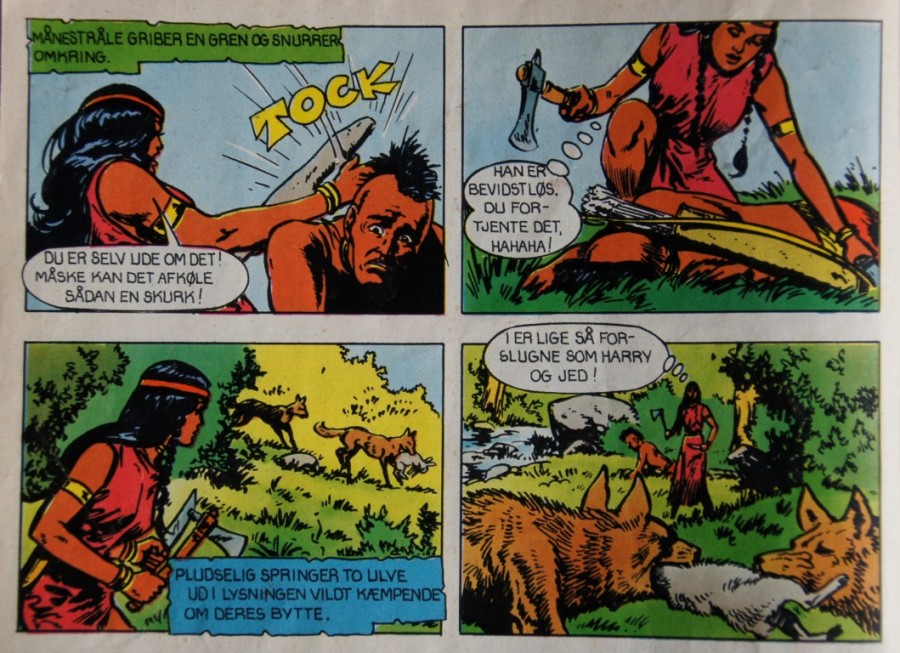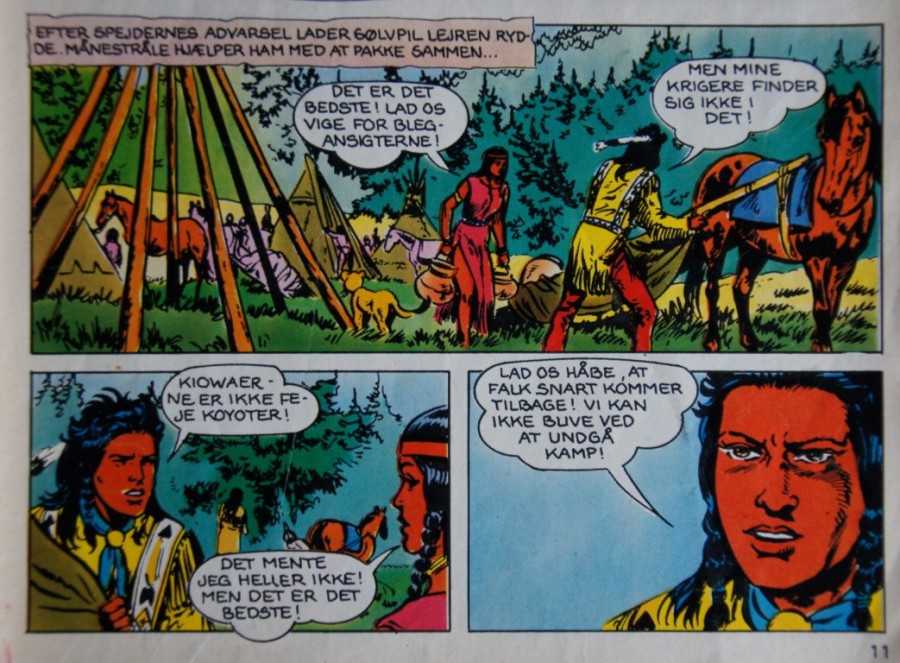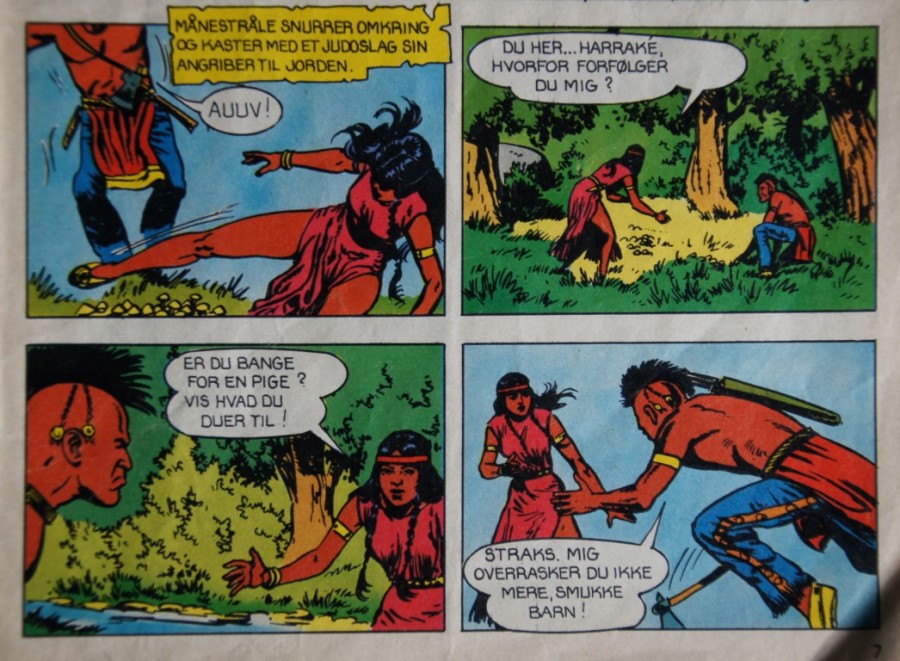In the scrubs of the roadsides surrounding my childhood village as it was in the late seventies, you would sometimes come across empty beer bottles. People had thrown them coming or going to the beach, most likely on their way to visit ‘The Pearl’ a night club at the edge of the sea. They used the way there to get a head start on the alcohol. For us children this quickly became an extra source of income, so when we were out playing after a weekend, the first part of the game would be checking the roadsides – I think the return deposit at that time was about 0,25 oere per bottle. Afterwards we went directly to Gurli. She had a small grocery store in the right side of a house, where her husband had his barbershop on the left side. Her patience was lasting, even if her heart must have sunk by the sight of a horde of red-cheeked children each carrying two to four bottles. The proceeding were as follows: you gave your bottles to Gurli, you had earned 1 krone, and then you went with very patient Gurli to a little desk, where she kept her boxes with candy. The pieces were between 0,05 and 0,10 oere, she got a bag and now the fun began. One piece of fruity wine gum – the red one, two pieces of licorice, one pink and one yellow Pinocchio ball (5 oere each), hmm and what now, one piece of Jenka chewing gum (25 oere), okay, then one more Pinocchio ball and a salty licorice and fruity wine gum for the rest – but not the yellow ones! Thanks, NEXT. I believe it was only when ‘real’ customers came into the store that she asked us to wait outside, or if you were particularly indecisive, that she shot you a laser beam look though her glasses and said, “I haven’t got all day…” Afterwards we went out to devour the loot each with our own candy striped little bag. This was the rule, with the exception of the weeks where none of us had been able to persuade our parents to buy the latest Silver Arrow, then you negotiated, made a pile of bottles and bought the magazine to share, and if anyone bought candy instead of chipping in, then the law dictated, that they would not be allowed to read the magazine.
My two favorite games to play as a child, was either Indian or UFO – the latter meant that I either landed on a strange planet as an explorer or that explorers in an UFO landed on our planet (and wanted me to go with them into space!). But when we had huddled together over a Silver Arrow magazine, the game was given. We played Indian. Roles were negotiated upon, sometimes we were all Indians, at other times there was a group of palefaces in the company as well. I usually made the argument, that I should be Indian. My point was that it would make it more realistic, that with my light brown hair, I was by far the darkest of us, and I had a brownish corona around the pupil in an otherwise bluish eye. When we were too many in the game to fit the characters, we made up new names. Then we played, scattered in the landscape, in the meadows with the ponies, down by the moor, in the small wood, here and there. We built a society and deconstructed it again in the game, and we used all the facts we found in Silver Arrow. For example, it said that the Kiowa called May the month where the leaves turn green, or October, the month where the animals/deer lose their horn. We did not know the name of all the months, but then we would make them up and the idea alone was enough to generate a game, where we spend the day renaming everything so things had names that described them instead of boring everyday names, where the description was intrinsic to the name. Silver Arrows ‘tribal-news’ brought new tidbits and details about Indian life every week. We were fascinated by the fact that the Indians apparently could move so quietly and carefully, that no branch would snap. Some playmates managed that with more natural grace than others did. I practiced, but evil tongues do say that I am a stomper by nature, so I never succeeded in being noiseless. I had moccasins as slippers and wore headbands regularly; my hair was braided most of the time, I rode the village ponies and we embroidered beads on leather at the after-school center, so they could be used as bookmarks. In Silver Arrow – ‘the fresh Indian-magazine for boys and girls´ you would often find instructions on how to build many things yourselves and descriptions on how they were used, and of the different tribes and how they lived or used to live. UFO or Indian – on many levels it was the same game. We just did not know.
Silver Arrow is the young chieftain of the Kiowa’s. He is admired and well-liked by all Indians because he strives for peace and justice with both courage and strength. 1) After the warning from the scouts, Silver Arrow orders the camp cleared. Moonbeam helps him by packing… “It is for the best! Let us give way to the palefaces!”; “But my warriors will not back down!”, 2)“The Kiowa are not cowardly coyotes”; “I didn’t mean that. But it is better that way!”, 3)“Let’s hope Falcon will be back soon! We cannot keep avoiding battle!” [From ”The fight over the Indians Wood”, no. 36, 30. aug.-5. sep., 1976 (Danish edition)]
I forgot Silver Arrow, and even if I never stopped being interested in American history, that part slipped into the background. The magazine stopped being weekly and instead you would find X-men, Hulk and other magazines on the shelves in Gurlis grocery store. We grew up and left the village. Then one day as I was being bored in the present and letting my thoughts drift from one subject to the other, but with an Ipad within reach, I came to think about the translations of Silver Arrow. Was it translated into Danish from ‘Silver Arrow’ and what about Falcon and Moonbeam, did they have phonetically Indian names in the English edition. I looked it up on a whim and was surprised when I realized that the series was never translated from or to English, it was drawn and written for an audience in Belgium, The Netherlands, Germany and the Nordic countries. To some extent, it made perfect sense that it might be difficult to sell a weekly magazine to the fresh boys and girls in America, when the often-despicable palefaces were in fact themselves. This lead to another surprising observation, that as a child, even though I knew I was white and neither brown skinned nor black haired, I never considered myself one of the palefaces. I played what I was, namely a native, and when I wanted to distance myself from it I was an explorer on a distant planet instead. The fact that it surprised me that Silver Arrow was written for a native audience shows that I (and perhaps we) sometimes forget how very far our culture and its roots are from the American cultural circle.
I could not leave it at that, so I tried to find more information, and it was correspondingly amusing to discover, how Silver Arrow was described on some English fora for comics. Snippets of dialogue had been translated, but other than technical comments about the drawings, there was a certain amount of headshaking involved, especially over the fact, that the Indians looked like WASP’s (White Anglo-Saxon Protestants), just with brown skin. Moreover, that the clothing was not authentic, and that (too) much weight was put on Moonbeams long and well-shaped legs, and that she was rather lightly dressed regardless of the season, in a pinkish high slotted robe. This is all probably true from a modern point of view, yet I do not find this criticism very serious, this time not spoken as a native or intergalactic explorer, but as a time traveler. My point being that even if the series from a contemporary American viewpoint could be seen as limited or offending in some ways, the fact is that there are no WASP’s in the countries it was published in, because apart from being rather white, blonde and blue-eyed, that is not who we are. On the same note, even as a child I did consider that Moonbeam was unfortunate rather often and in need of rescue from her friends, but on the other hand, she was able to rescue both herself and others on many occasions, she was after all a judo-expert. In my mind, she was a super cool squaw, who had her own puma cub. I did not think much of her clothing, except that I thought her grown-up muscular thighs perhaps were a bit thick, but again, I read Silver Arrow in an era where most people never bothered to wear a top on the beaches and the female teachers at our after-school center wore bikinis in the summer and the male just shorts. Oh yes, and when we went to the beach with the after-school center we just swam in our underwear or without, and sometimes we brought colors and painted our teachers. Everyone wanted to paint M, because she had very beautiful breasts that you could color into flowers, E was okay as well, but she had breastfed three children, so her breasts were a bit dried out, and no one wanted Er because he had so much hair, that it made it impossible to make the color sit right. But we did it anyway, because we would hate him to be sad, and instead we could sand-tattoo him or bury him.
Moonbeam is the daughter of a chieftain and she is best friends with Silver Arrow and Falcon. 1) Moonbeam spins around and with a judo kick throws her opponent to the ground. “AUUV!”, 2)“You there… Harraké, why are you following me?”, 3)“Are you afraid of a girl? Show me what you’ve got!”, 4) “At once, you will not fool me again, beautiful child!”
 1) Moonbeam grabs a branch and spins around: TOCK –”You had this coming. Maybe this can cool you down, villain”, 2)“He is unconscious. You deserved this. HAHAHA!”, 3) Suddenly two wolves leap into the clearing fighting wildly over their prey, 4)“The two of you are just as gluttonous as Harry and Jed!” (Paleface friends, ed.) [From “Moonbeam in the clutches of a villain”, free appendix – no. 14, 1976 (Danish edition)]
1) Moonbeam grabs a branch and spins around: TOCK –”You had this coming. Maybe this can cool you down, villain”, 2)“He is unconscious. You deserved this. HAHAHA!”, 3) Suddenly two wolves leap into the clearing fighting wildly over their prey, 4)“The two of you are just as gluttonous as Harry and Jed!” (Paleface friends, ed.) [From “Moonbeam in the clutches of a villain”, free appendix – no. 14, 1976 (Danish edition)]
Silver Arrow was created by the Belgian artist Frank Sels (3.10.1942-19.12.1986) and was published in Denmark from 1970-1986. The series began as early as 1966 in the Flemish magazine ‘Ohee’, but did not develop until it found a home at the German publisher Bastei Verlag in the late sixties. By the German publisher Wick, who own the Frank Sels archives the lifespan of the series is noted as being from 1969-1988, furthermore Wick are republishing Silver Arrow and has been for some years! Tome 38 and 39 are expected the 7. November 2015, while tome 50 is planned for 2017. The reissues are unabridged meaning that some of the stories have been added to with entirely new images that were previously cut of in the editorial process. The son of Frank Sels, the graphic artist Ersel (Erwin Sels) has also been involved in the reissuing and recreated the covers for episodes where the originals was missing.
An innocent question about names one afternoon when I was bored, and suddenly I am thrown into an investigation that wants to tangle its arms further and further. I am still curious, because how many copies were made in the different countries and how many children in Germany, Belgium, Netherlands, Denmark, Sweden, Norway and Finland grew up with Silver Arrow and strange pieces of knowledge about First Nation people in their minds. Was the name of September really month of the yellow leaves? And what about the Kiowas, did they know that thousands of children in faraway places longed to ride over the prairie on a white stallion named Storm Wind and see a herd of bison? Did Frank Sels correspond with the tribes, and what motivated him to create the stories about Silver Arrow besides the obvious, that it became his livelihood? I will return to answer this, if I find any answers. This could be a series.
By the way, Silver Arrow is called Zilverpijl in Flemish and Dutch, Sølvpil in Danish, Silverpilen in Swedish, Sølvpilen in Norwegian and Silberpfeil in German.
 [From “The desperate fight of the Hopi’s”, no. 27, 30. June, 1980 (Danish edition)]
[From “The desperate fight of the Hopi’s”, no. 27, 30. June, 1980 (Danish edition)]


Moonbeam is gorgeous and the sexiest Comic figure ever (even sexier than Catwoman)